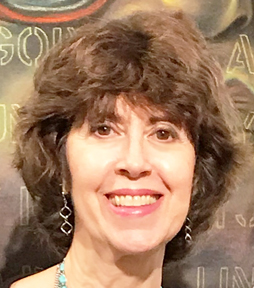The impact of an increasingly digitalized world has affected all areas of our lives, including the arts. As many creatives embrace new technology to enhance or supersede mediums that are centuries old, others continue to find inspiration in the tactility of pencil on paper, oil on canvas -- or in the case of Ellen Weider, the technique of drypoint.
Weider has been engaged with the print medium for over thirty years. Her work is in the print collections of the New York Public Library, Rutgers Print Study Archive at the Zimmerli Museum, the Newark Library, and the Free Library of Philadelphia. Her solo exhibit at the Manhattan Graphics Center in Manhattan showcases twenty-five black and white prints.
Drypoint is a type of intaglio process, frequently used in combination with etching and acquatint. The former presents line, and the latter creates areas of tonality. Weider uses solely drypoint. With a diamond point stylus, she achieves a range of depth and density by her manipulation of the metal burrs raised by her incisions on copper plates. For those familiar with the world of printmaking, Weider's offerings bring to mind the anticipation of seeing how incised lines will translate after a proof is pulled. By making a decision to leave a definitive plate tone, Weider ensures that all native markings endemic to the plate remain intact. These elements add an additional layer to the final imagery.
The majority of Weider's plates are circular. This serves to stand either in contrast to rectangular and angular constructs, or as a repetitive iteration of spherical elements within.
Top motifs for Weider embrace the use of organic forms that speak to the mysteries of nature, and an ongoing vocabulary of geometric, architectural, and personal iconography.
In To-Do, Weider places an oval shape containing concentric lines within the lower two-thirds of the space. The black furry dots, when viewed en masse, read less as pattern and more as components of a unit larger than themselves. There is a compulsive, repetitive quality. In their sameness, they yield an individuality of the whole -- resembling a slide viewed under a microscope or an enlarged fingerprint.
New Year suggests the cross-section of a plant or fruit form. A
distinct three-dimensionality emanates from the central flat core to
the edges, which resemble a raised beaded border. The result has a
meditative quality, as well as the stimulation of optical illusion.
In The Plan, Weider combines signature symbols into one
composition. Three are pure line, the fourth is shaded. The bed, chair,
and staircase record elemental objects that in Weider's hands become
mysterious and laden with metaphor. Repeatedly, the pictograms co-exist
with a visual background that originates from the plate's unpolished
surface.
That Way invites the viewer to contemplate a modern riff on
formal structure -- both ancient and contemporary -- that we interact with
every day. Whether a reflection on the staircases the Mayans built to
the gods, a way out of the depths to a higher place, or just as basic
building blocks of rectangle upon rectangle -- Weider mines the
subconscious, both hers and the observer's.
With a sensibility similar to Elizabeth Murray's preoccupation with an
examination of domestic objects, Weider's terrain is repeatedly
populated with diaristic contemplations of ordinary furniture: dressers,
chairs, tables, beds. Frequently there is something off about them.
They are presented in an isolated, existential setting, stripped of
their utility -- as if objects in a dream. In Wish List, Weider
places totemic hieroglyphics onto the faà �ade of a chest of drawers. A
series of scratchings evocative of the female body inhabit the center
panel.
The nervous energy and quirky, tactile lines of Expand reference the ironic humor of a New Yorker
cartoon. Contained within the impression, here is a chair without a
sitter. Weider has conveyed the absurdity and ordinariness of every day
life.
A companion piece, Balance, offers the viewer another piece of
ambiguous minimalist furniture -- a table without a fourth leg. The
subtext hovers between a metaphysical interpretation of a concrete
structure and the question of, "When is a table just a table?"
Weider -- like all artists -- dating back to those who scrawled the first primal characters on a cave wall, demonstrates the desire to visually narrate her thought process, and to comment on the world around her.
The immediacy and spontanaiety of the drypoint process has served her well.
(Note: You can view every article as one long page if you sign up as an Advocate Member, or higher).





